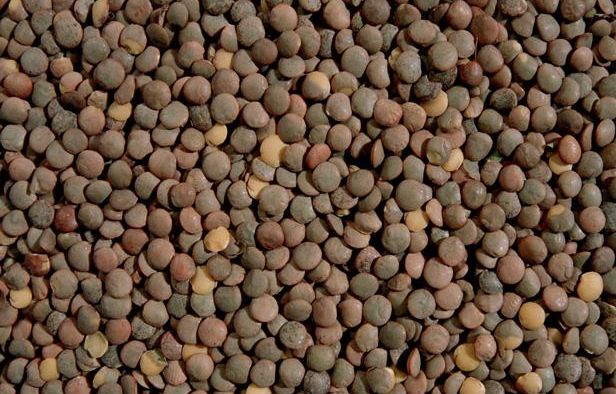In sport, we qualify as “underrated” a player not recognized at his fair value and not having the favor of the public despite his contribution on the ground. If we had to transpose this qualifier to food, we would naturally lean towards legumes. Chickpeas, red or white beans, lentils, split peas: these pulses seem to tick many boxes, especially in times of inflation. Imagine a cheap product – we’re talking about a can of 250 grams drained for less than a euro in any supermarket, packed with protein AND good carbohydrates – so satiating. Add a caloric value far from exploding the ceiling, and often with a max of iron, fibers and companies.
Said like that, the product has it all. But, while they were promised to be the Mbappé of shopping baskets, legumes are the Giroud: often shunned and whose real contribution is only appreciated by certain purists. France eats half as many pulses as the European average, four times less than the world average, and its own consumption has been divided by four in twenty years, according to government figures. Why so much love?
The price, ally and enemy
One of the strong points of legumes remains its weak point: the price. “For a long time, these foods had the image of the product for precarious people who did not have the capacity to buy meat”, estimates Marie-Eve Laporte, teacher-researcher at the IAE Paris-Sorbonne and specialist in changes in eating behavior.
Another common thought, “the product doesn’t really make people dream”. The somewhat bland lunches in the canteen, based on beans or lentils, have been there. And since we are into ideas that die hard, let’s go cheerfully. Cassoulet, chickpeas… Do you see where we are coming from? “Legumes are known to cause digestion problems, which gives them bad press,” says Clémentine Hugol-Gential, professor and specialist in contemporary food issues at the University of Burgundy.
Another grievance mentioned by the expert, the preparation time: ideally, legumes should be drained between half an hour and 48 hours before cooking, “therefore requiring planning, which most French people do not like, preferring to organize meals on the fly. According to a study* by the Research Center for the Study and Observation of Living Conditions (Credoc), the French who consume little or no legumes cite the preparation time first (36% of responses).
But what about legumes?
More than a regular sulk, legumes would therefore be a blind spot in the kitchen. “In the collective imagination, the model of the ideal meal often breaks down like this: vegetables, meat, starch, even a dessert and a fruit”, lists Marie-Eve Laporte. Where to put the pulses in there? These ingredients suffer from their versatility: not really vegetables, not really starches, and not pure protein either, “the French struggle to see what to replace on their plate”. Again according to the Credoc, 34% of people who consume only a few legumes say they do not know how to cook them. Unlike other cuisines, especially those of South America and Asia, where they have their place in many traditional dishes.
Especially since some foods are irremovable on French plates. According to a 2021 Statista study, 80% of French people eat pasta regularly, beaten only by Italians (83%). Another big star of the plates, the potato, with 50 kilos per year per French. Two starchy foods that could easily replace legumes – consumed at only 1.8 kilos per year and per French person, according to the National Agency for Food, Environmental and Occupational Health Safety.
The rise of pulses
But little by little, minds are changing. Gone is the idea of too “little people” food; with inflation, price once again becomes the number one purchasing criterion. “Especially since, with the price of meat, or the desire to reduce its consumption, the proteins of legumes are becoming very interesting”, develops Clémentine Hugol-Gential. To use our 250 gram tin, with an average rate of 8 grams of protein per 100 grams of legumes, we obtain 20 grams of protein for less than one euro. Difficult to find cheaper on the market.
Far from this image of food reserved for the poor, the product is on the contrary acclaimed among high earners: 54% of bac+2 and more eat it at least once a week, against 39% of non-graduates, according to the study. of the Credoc.
Veni vidi healthy
Beyond the purchasing power crisis, legumes are surfing on another trend: the healthy. Alongside basmati rice, avocado, skyr and other star ingredients, they are gradually making a place for themselves in the nutritional advice of fitness and bodybuilding influencers, Sissy Mua and Tibo InShape in the lead. Again a question of protein, but also fiber and relatively low calories, everything you look for when you want to lose weight.
And to save chickpeas and other lentils from relegation, it’s not just Sissy and Tibo. In particular, the French government launched the National Strategy plan for vegetable proteins in 2021. Over the past two years, more than 100 million euros have been drawn up to finance investments in the adaptation of equipment and to support farmers, but also for the promotion of vegetable proteins in food. “A European Protein Strategy will be launched in the first quarter of 2024,” EU Agriculture Commissioner Janusz Wojciechowski also announced last week. What perhaps remake legumes of potential holders.

